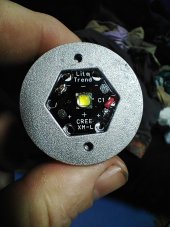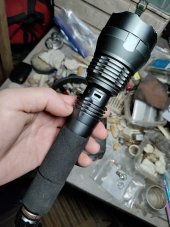Yurtdweller
Solar Enthusiast
My solar flashlight quit working, and I have determined that the driver is bad. The power source is dual 18650 batteries at 7.2v nom. The bulb is cree xm-l (C1). Bulb powers up on 4v from the bench top supply, but power applied to the driver does nothing. Can someone advise me on how to buy a new driver? I cannot seem to find the appropriate part, or I do not know what specifications are appropriate. This is a very nice light. Tactical, aluminum, and also charges off USB. Paid a bunch for it. The company no longer exists. Thanks.









